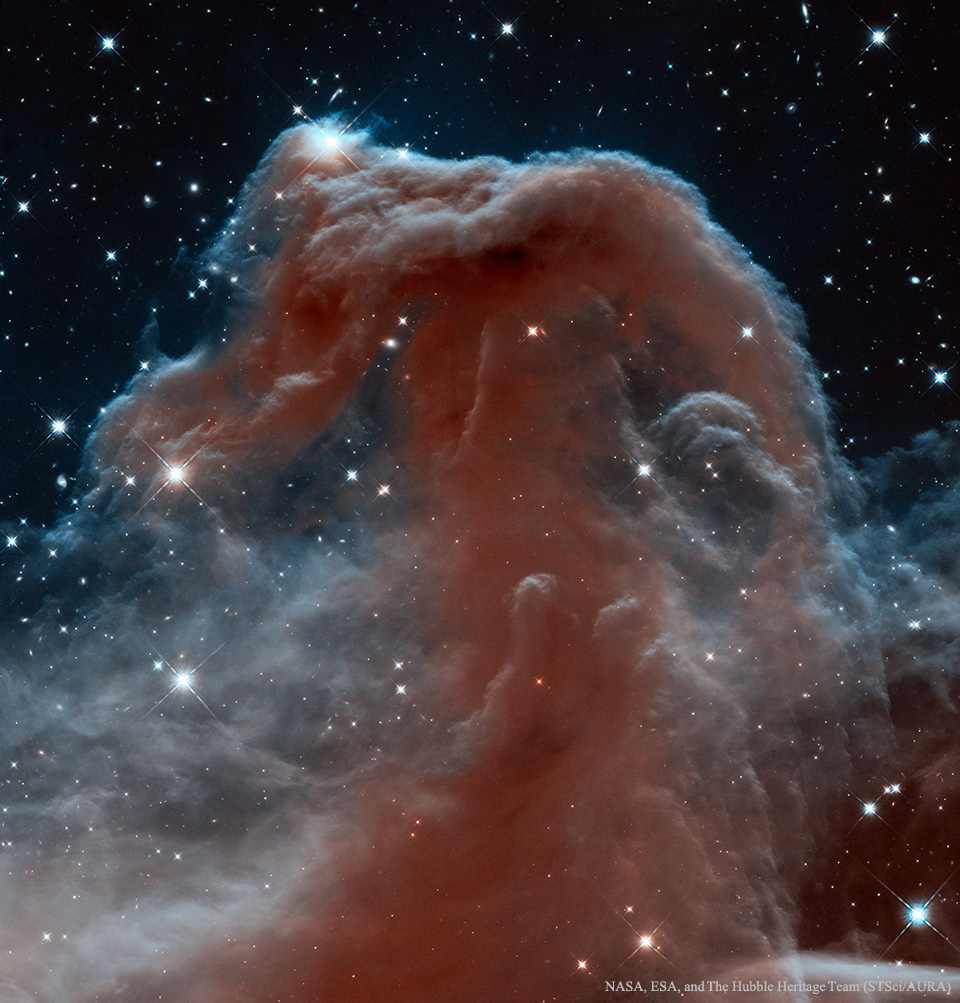2020 April 12
The Horsehead Nebula in Infrared from Hubble
Image Credit: NASA, ESA, and The Hubble Heritage Team (STScI/AURA)
Explanation: While drifting through the cosmos, a magnificent interstellar dust cloud became sculpted by stellar winds and radiation to assume a recognizable shape. Fittingly named the Horsehead Nebula, it is embedded in the vast and complex Orion Nebula (M42). A potentially rewarding but difficult object to view personally with a small telescope, the above gorgeously detailed image was taken in 2013 in infrared light by the orbiting Hubble Space Telescope in honor of the 23rd anniversary of Hubble’s launch. The dark molecular cloud, roughly 1,500 light years distant, is cataloged as Barnard 33 and is seen above primarily because it is backlit by the nearby massive star Sigma Orionis. The Horsehead Nebula will slowly shift its apparent shape over the next few million years and will eventually be destroyed by the high energy starlight.
April: (AWB’s) Global Astronomy Month
Tomorrow’s picture: strangely placed stone
哈勃太空望远镜的红外波段马头星云
影像提供: NASA, ESA, and The Hubble Heritage Team (STScI/AURA)
说明: 漂泊于宇宙中的一大团星际尘埃云,在恒星风与辐射的雕塑下恰巧带着我们熟悉的外观。令名贴切的马头星云,深埋在庞大且复杂的猎户座星云(M42)之内。对使用小望远镜的人来说,马头星云是值得一看但难度颇高的天体。上面这张壮丽且细致的影像,是在2013年由轨道上的哈勃太空望远镜在红外光波段所拍摄,以纪念哈伯望远镜发射的第二十三周年。这个离我们约1,500 光年远的暗分子云,另一个编录号是巴纳德33,它之所以现形,则是因为有邻近的大质量恒星参宿增一作为背光。在接下来的数百万年之中,马头星云的外貌会慢慢改变,并在高能量星光的摧残下消失灭迹。
明日的图片: strangely placed stone








“令名贴切”是否应为“命名贴切”?
令名:美好的名称
so beautiful!??